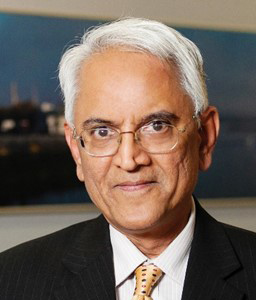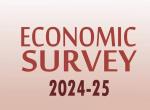The current wisdom is that Xi has consolidated his authority in the party, installing loyalists in key positions.
The forthcoming 20th Congress of the Chinese Communist Party is expected to confirm a third term for President Xi Jinping at its head, breaking from a three-decade tradition of a two-term limit. He will almost certainly be elected for a third term as President by the National People’s Congress in March 2023.
Unsourced reports surfaced recently in sections of the Indian and foreign media, claiming that Xi was under house arrest, preparatory to being overthrown in a coup. Stories of internal power struggles in China are not unusual, nor are periodical apocalyptic predictions about the Chinese economy and its political system. The opacity of the Chinese decision-making apparatus provides fertile ground for such “analysis”, which feeds into wishful thinking and the craving for sensation in today’s media age.
On the contrary, the current wisdom is that Xi has consolidated his authority in the party, installing loyalists in key positions in the military, security and intelligence hierarchies. The party describes him as a “core leader” and has incorporated the “Xi Jinping Thought on Socialism with Chinese characteristics” into its constitution. The personality cult is further burnished by his projection as the architect of China’s efficient response to Covid-19 (erasing public memory of the initial confusion in its handling). He will now break free of the mortality of the two-term limit and join the Chinese Communist pantheon of Mao Zedong and Deng Xiaoping, making it a trinity.
Many China-watchers believe that the Congress will strengthen Xi’s hand in his goal of “rejuvenation of the Chinese nation”. His effort to make China a developed country by 2049 has involved diluting the market-led policies of his predecessors and pursuing a state-led strategy of economic and technological self-reliance, with emphasis on equitable income distribution. He has tightened the Party’s control of the military, supervised its professionalisation and declared that China would have a “world-class military” by mid-century.
The foreign policy of the Xi decade barely conceals China’s superpower ambitions—an unabashed deviation from the narratives of “peaceful rise” and “peaceful development” that Xi’s predecessors had promoted. China has aggressively expanded its political, technological and economic reach across all continents. Its tools include the carrot of infrastructure projects (as in the Belt and Road Initiative), the stick of economic coercion to enforce compliance with Chinese foreign policy interests, and unilateral action to enforce its territorial claims (as with the disputed islands in the South China Sea). The abrasive “wolf warrior” posture of Chinese diplomacy is also a major departure from the past.
The headline trend of India-China relations in the Xi era has been downwards, despite India’s best efforts to sustain a modus vivendi. The legacy frictions—from the border dispute, irredentist Chinese claims on Arunachal Pradesh, its encouragement for Pakistan’s anti-India actions and undermining India’s global interests in other ways—have sharpened. They have been reinforced by newer issues. The vastly expanded Chinese political, economic and military presence in neighbouring countries arouse India’s security concerns. The China Pakistan Economic Corridor—a physical and digital infrastructure link from western China to Pakistan’s Arabian Sea coastline—not only passes through Pakistan-occupied Indian territory, but also envisages a strong Chinese political and military presence on India’s western flank. China’s debt-financed dual-use port infrastructure development in India’s immediate neighbourhood undermines India’s interests in the region. Most importantly, the tenuous (and periodically disturbed) “peace and tranquillity” in the border areas, flowing from agreements in the 1990s, broke down altogether in April-May 2020, with the military confrontation in Ladakh. The standoff has effectively stalled India-China dialogue, to the extent that the two leaders even avoided a public handshake at the Shanghai Cooperation Organisation summit in Uzbekistan last month.
Much of the developed world now sees an assertive China—flexing its muscles in its neighbourhood, upgrading its naval presence in the Indo Pacific, expanding its global economic influence, flaunting its advanced technologies and manipulating multilateral institutions—as a strategic competitor. The United States had recognised China as a potential superpower rival even in the early 2000s, but the lure of business with China largely dimmed the strategic urge to counter its rise. Xi’s aggressive foreign policy has now stimulated a stronger US response, with Secretary of State Anthony Blinken publicly declaring that China has the “capacity and intent to reshape the international order with its economic, diplomatic, military and technological power”. The US and its allies are now trying to restrict Chinese access to sophisticated technologies, diversify their supply chains and encourage businesses to shift out of China—with varying degrees of success. The US has stepped up defence cooperation with its allies in the Pacific Ocean. The Quad (Australia, India, Japan, US) dialogue, the AUKUS (Australia, UK, US) military pact and other initiatives for a “rules-based order” in the Indo Pacific, all have the thinly-veiled objective of restraining China’s perceived hegemonistic ambitions.
Until about a decade ago, China was widely considered a partner in building a post-Cold War order. The trend today is towards a new kind of US-China cold war, which could suck in other countries on both sides of the divide.
As India pursues its global ambitions, it has to address India-China asymmetries by fast-tracking its economic agenda, prioritising technology development, supply chain resilience, energy security and defence self-reliance. It has to address China’s unfriendly actions in the neighbourhood, and safeguard its economic and security interests in the Indo Pacific. An important strategic underpinning of the India-US partnership, reflected in the Quad dialogue and other joint initiatives, is the convergence of perspectives on a security order in the Indo Pacific. This convergence gives the US a stake in a strong, democratic India in the region, and drives other strands of this valuable partnership.
The asymmetries in the India-China relationship are obvious. But even countries in adverse asymmetric relationships have levers to protect their vital interests. Asymmetry does not preclude mutual respect and mutual sensitivity to core concerns. A modus vivendi with China has to be based on mutual interest in peace and stability in our common neighbourhood. These are the ‘three mutuals’ that India’s External Affairs Minister has been reiterating. It remains to be seen if post-Congress Xi Jinping, confronting a sluggish Chinese economy (further shackled by his “zero-Covid” measures), spiralling US-China tensions, and geopolitical uncertainties from the Ukraine war, would be willing to walk this course.











Post new comment